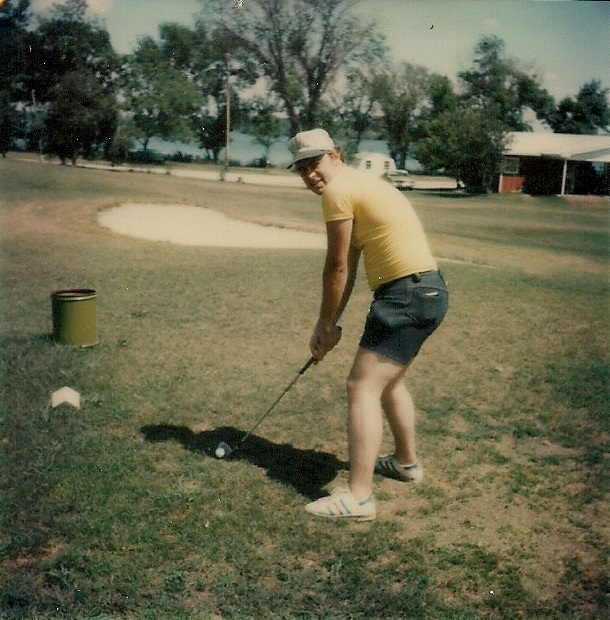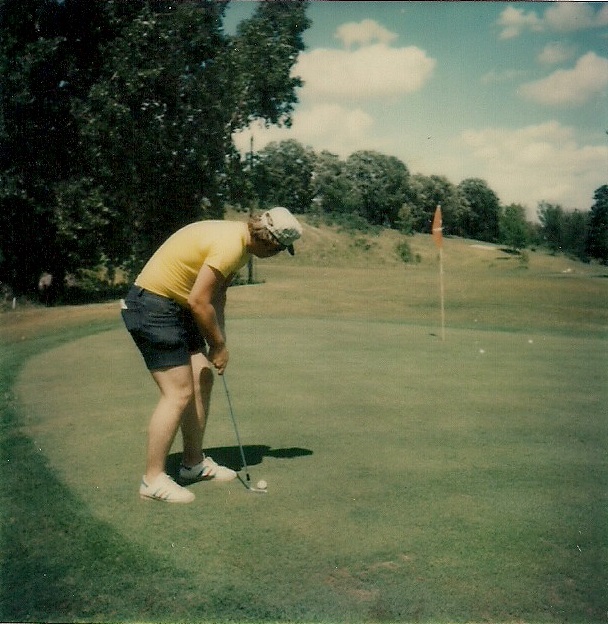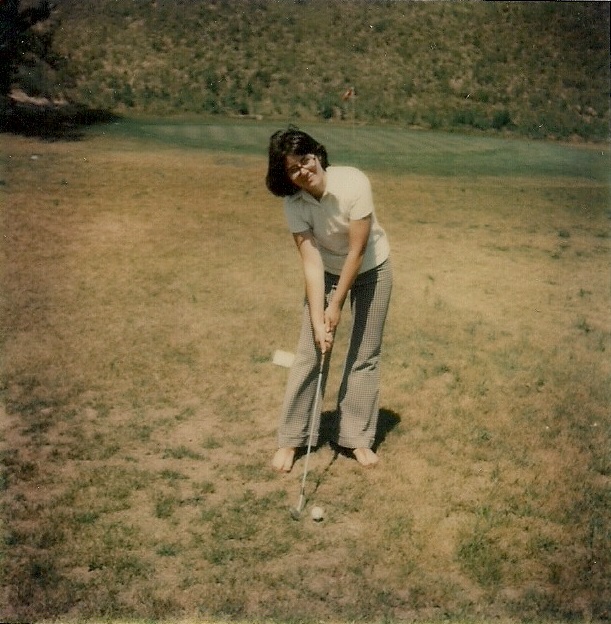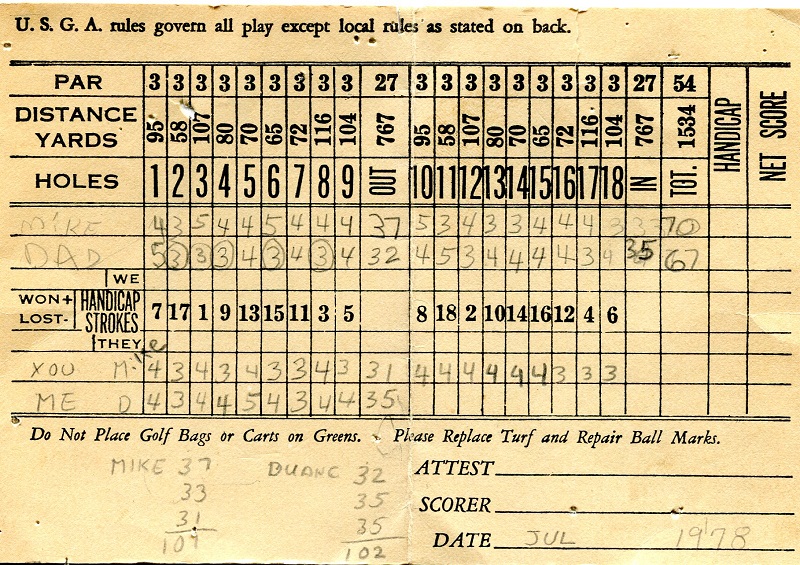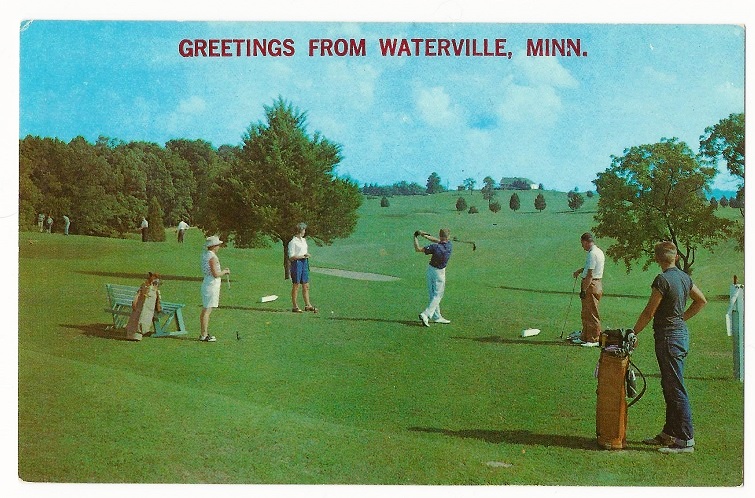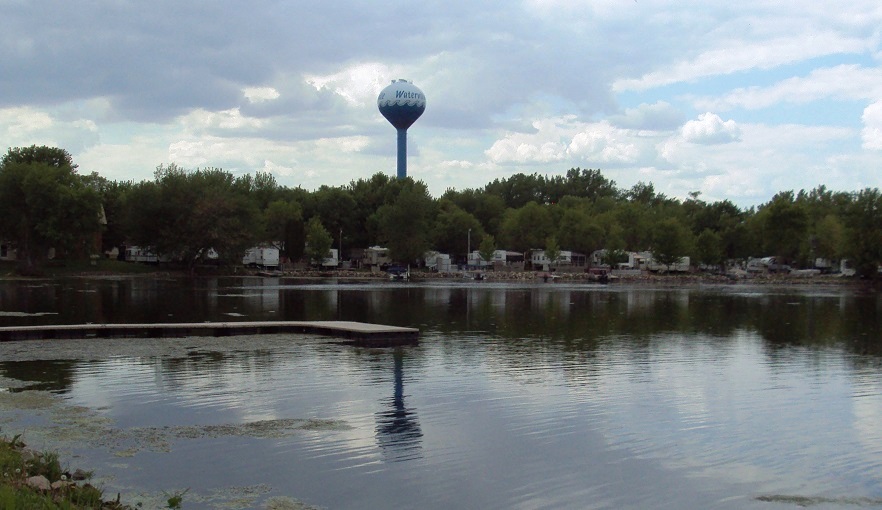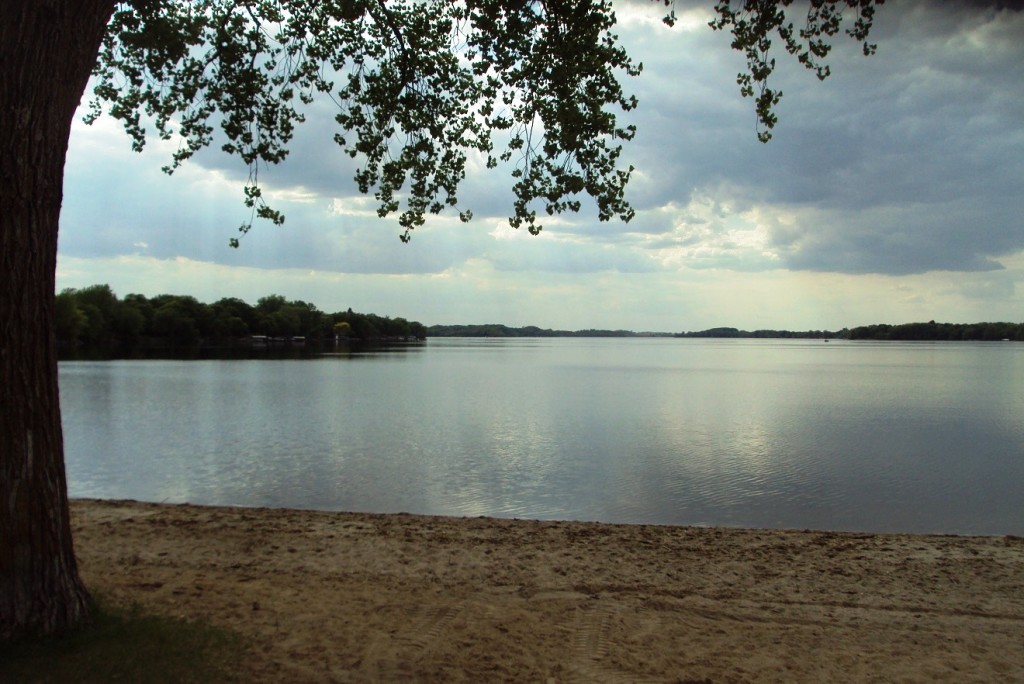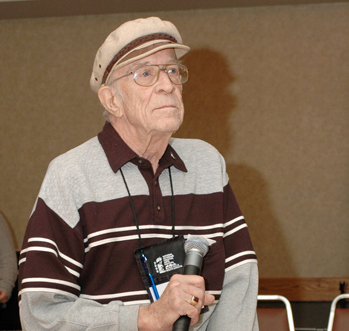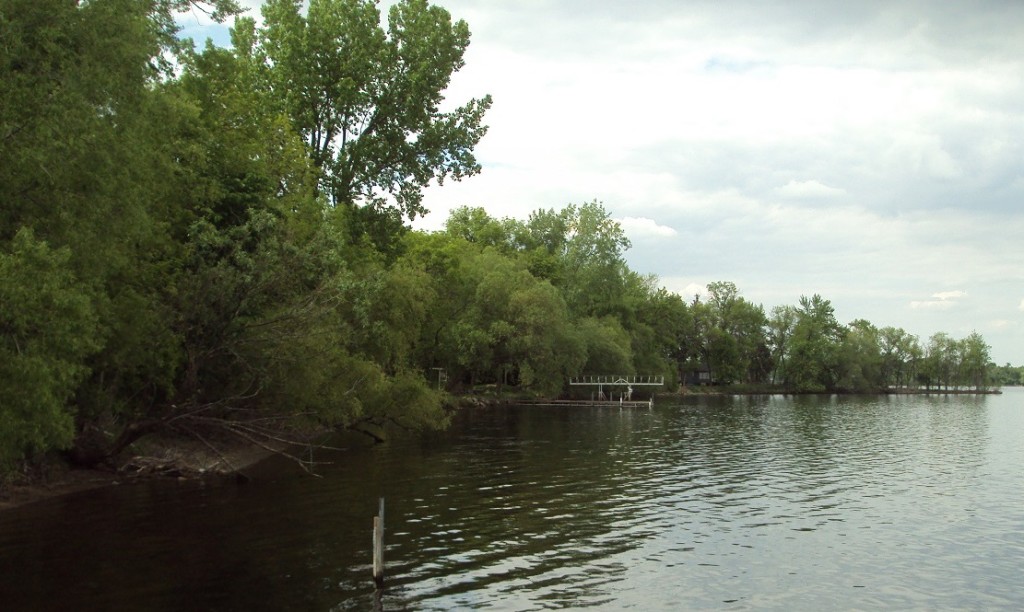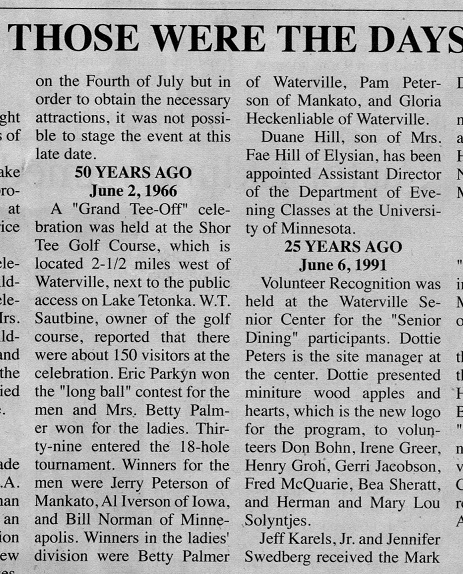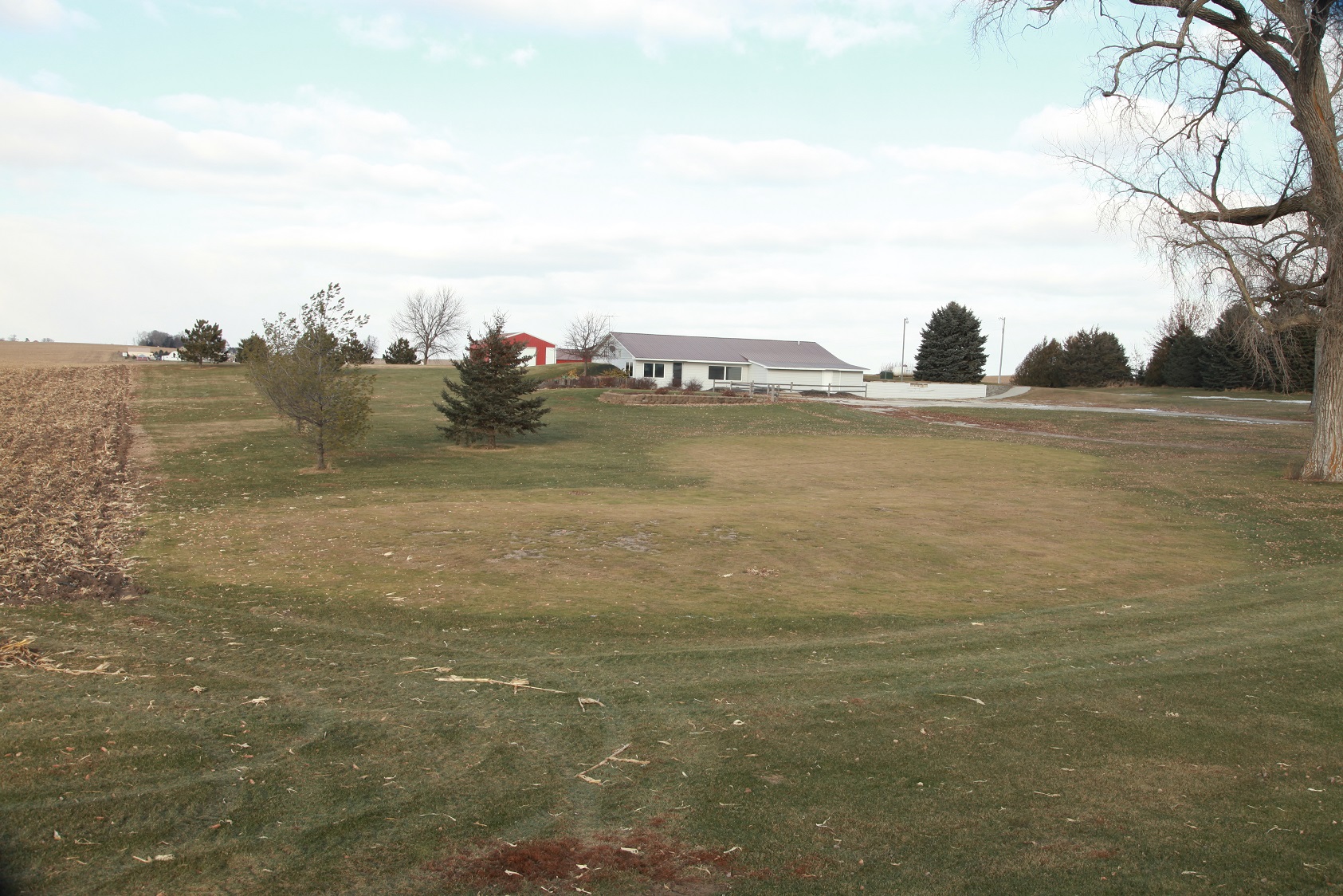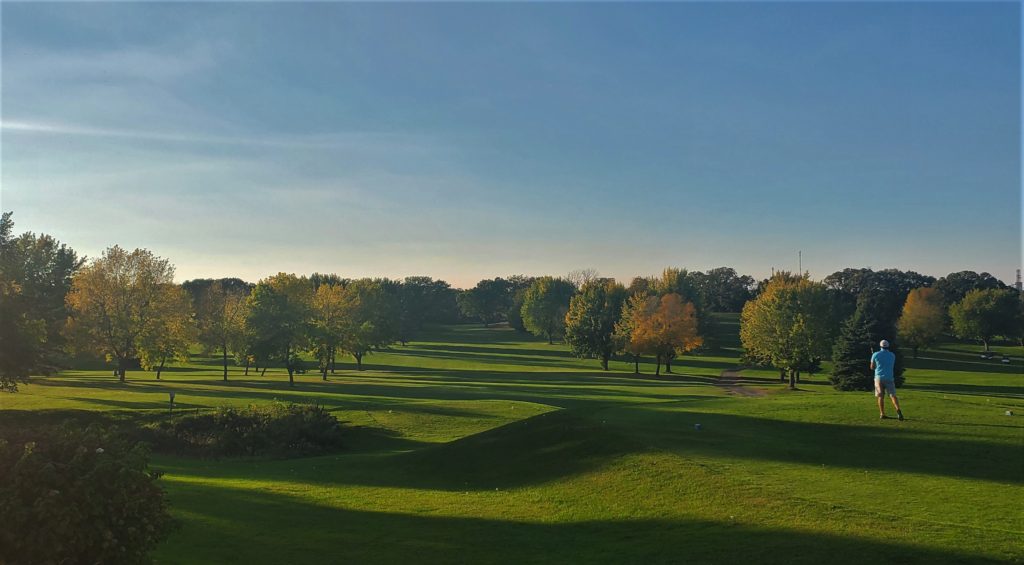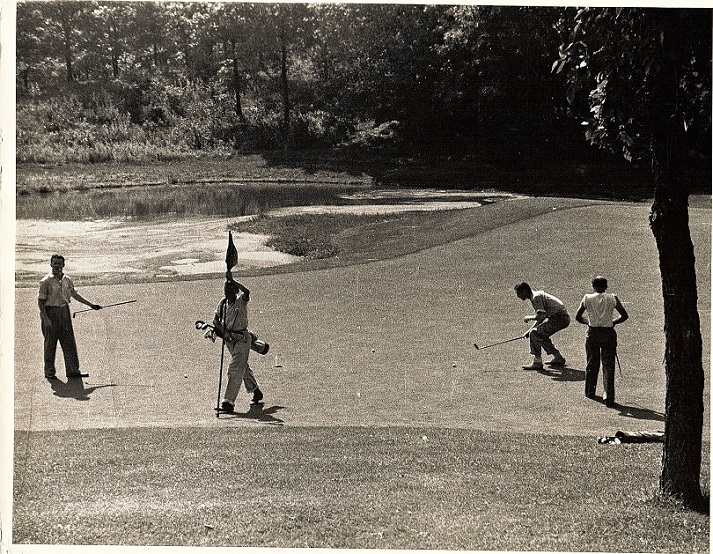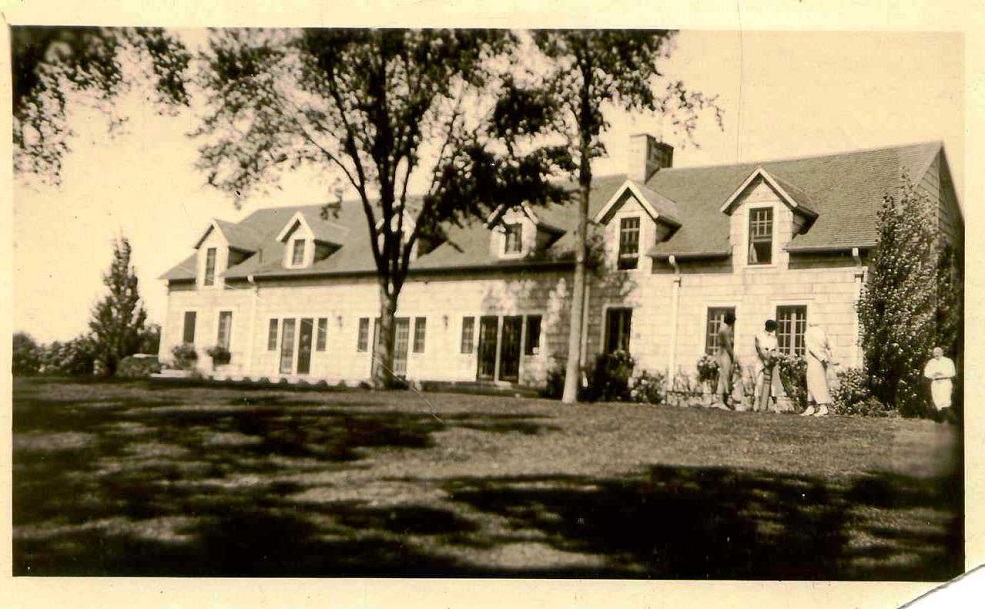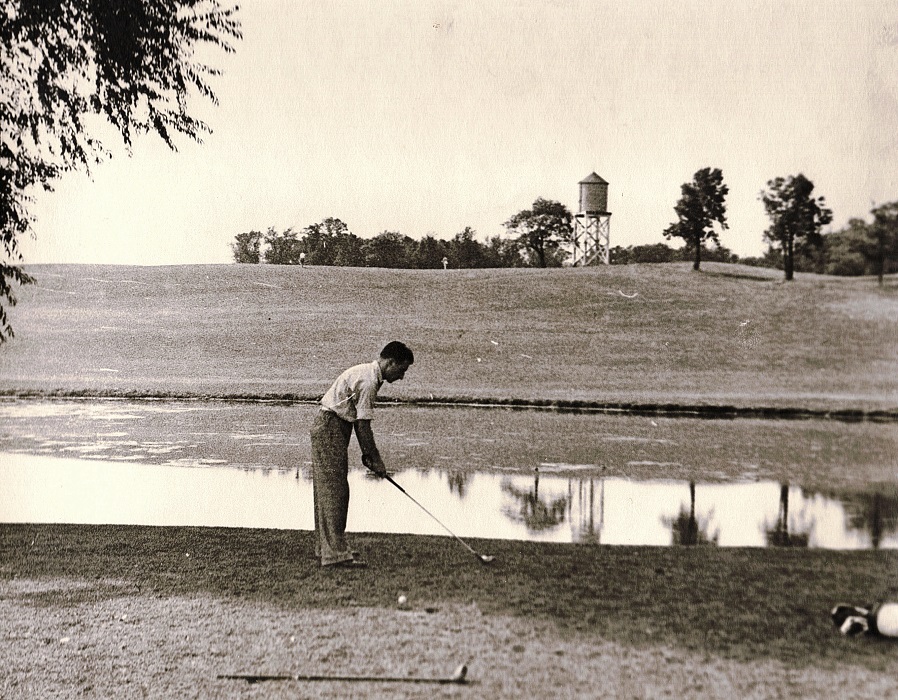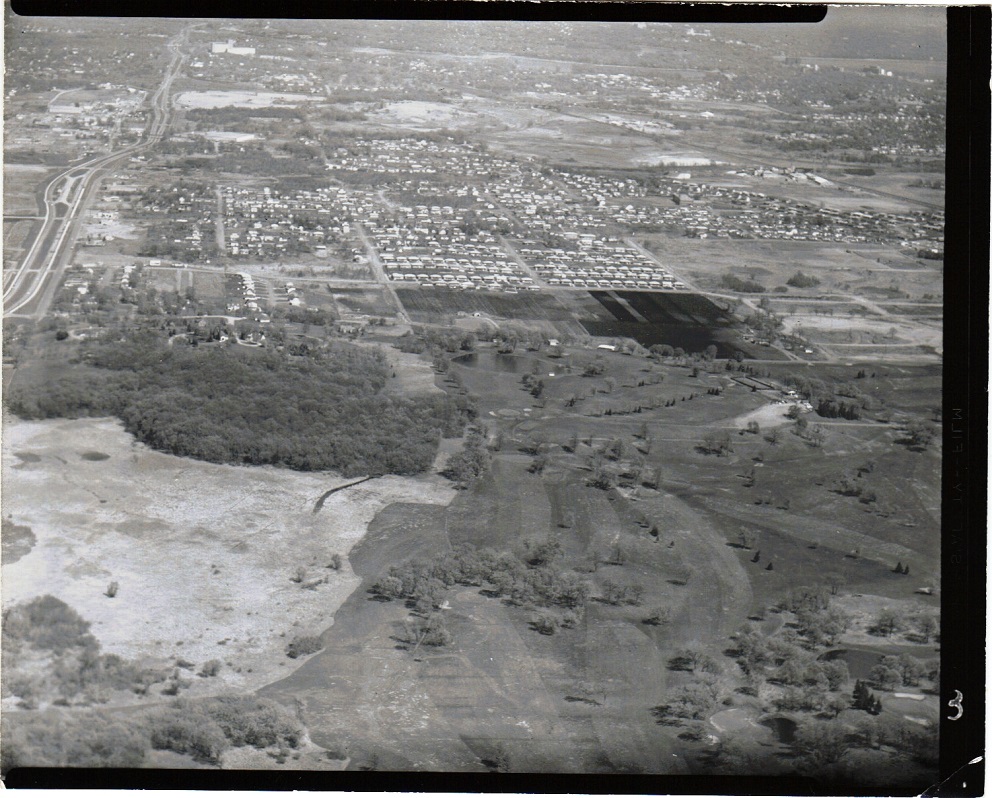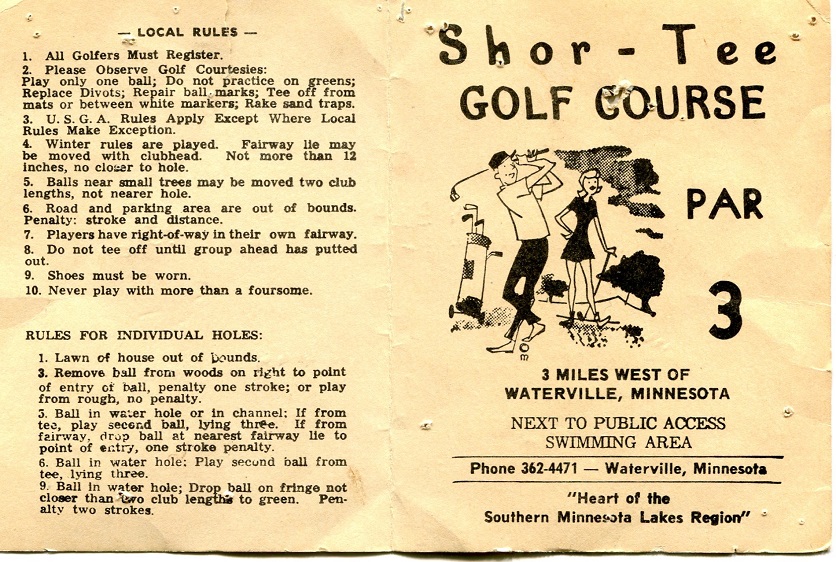
Gotta love people like Sam Terrell.
After I posted last week about the old Shor-Tee Golf Course alongside Tetonka Lake in Waterville, at least a dozen people recounted good memories of the course on the “You Know You’re From Waterville,…” Facebook page.
Then Terrell, who grew up in nearby Elysian, emailed me a detailed account of Shor-Tee and the course’s owner and founder, Bill Sautbine, complete with a few cool old photos and a photo of the scorecard. The text of Terrell’s email follows, with photos at the bottom.
Here are Sam Terrell’s recollections:
“The course had all par threes and was a very short course. If I remember correctly, the shortest hole was 58 yards and the longest was 116 yards. You could play the course with 2 clubs and a putter. I learned to play golf at Shor–Tee and also learned from Bill that you do when you hit a ball that may hit someone. I was teeing off on number 3 and hit one right over Bill’s head as he was teeing off on hole 4. He came rushing over and said, “When you think you are going to hit someone you holler ‘fore!’ real loud”. Needless to say I had many opportunities to holler ‘fore’ on such a small course when I was younger.
“I got my only hole-in-one on that course. It was on the 72 yard 7th hole. I played 27 holes that day. The first nine I hit the pin on hole 7 and thought that would be the closest I would ever get to a hole-in-one. The second time around, I hit a ball on 7 that hit the green and went in the hole on the second bounce. I was really excited and when I finished the second nine and was getting ready to go the third nine, I went into the clubhouse and told Bill I got a hole-in-one! His reaction was “oh, that’s nice”. It must have happened often because he did not get very excited about it.
“Back then, my future brother-in-law, Bob Preuss, lived on a farm west of the course and worked for Bill mowing the greens. He had to walk across a couple of fields to get to the course. Bill would make him change shoes because he didn’t want him getting mud on the greens.
“I talked to Bill years ago and he said he had intended to make the course into an 18 hole course but felt the community support was not good enough. He said he was a little disappointed because the community learned to golf on his small course but then went to Waseca and other courses where they could play longer holes and Shor – Tee was forgotten.
Terrell’s course description
Hole #1) The hole went up a steep incline starting at the clubhouse going north. Bill and June’s house sat just to the right of the green.
Hole #2) This hole was a short 58 yard hole on top of the hill that went east from behind hole 1. It had a big oak tree before the green so you could not hit a high shot. You had to punch a low shot under the tree to get to the green.
Hole #3) This was a hole that was 107 yards on top of the hill that went straight west with trees all along the right side all the way to the green.
Hole #4) This was a 80 yard hole that went south and was straight downhill. I like this one because if you drubbed the shot it could still roll down the hill and make it to the green.
Hole #5) This hole was 70 yards and went west towards the inlet off Tetonka. There was a small pond between the tee box and green.
Hole #6) This was 65 yards and came back east. Again you had to hit over the small pond.
Hole #7) This was a 72 yard hole that went towards the inlet.
Hole #8) This was the longest hole at 116 yards. It went east back towards the club house. When you finished the hole you had to walk west to get to the 9th tee box. There was a screen behind the 9th tee box to protect you from someone that may shank their tee shot to number 8.
Hole #9) This hole was 104 yards and ran parallel to number 8 and the road, going east towards the lake.
